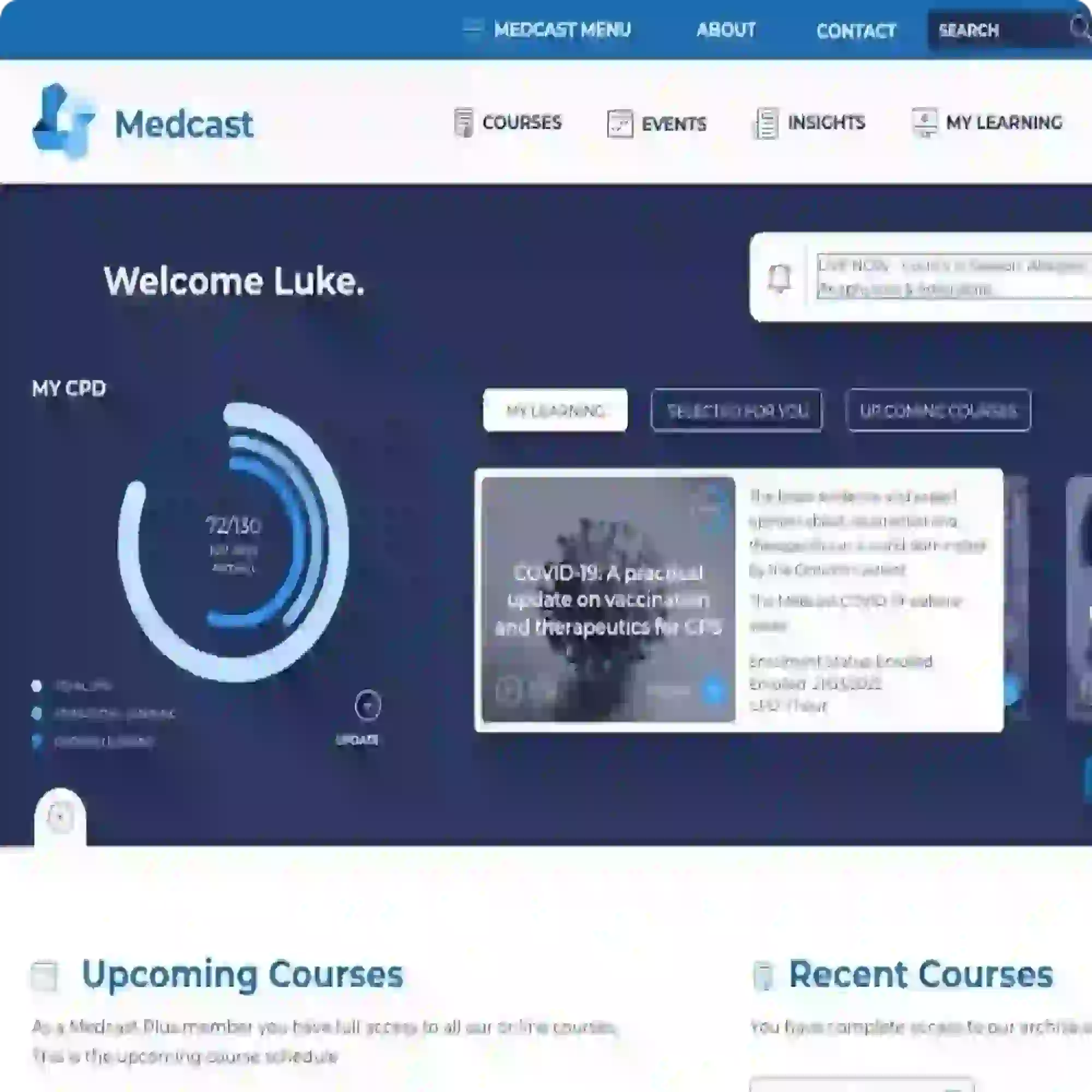Atrial fibrillation and stroke prevention: we can do better
Too many patients with atrial fibrillation (AF) and an elevated risk of stroke are missing out on appropriate long-term anticoagulation, and this puts them at unacceptable risk of catastrophic stroke and death. This makes early detection, use of validated stroke and bleeding risk assessment tools, and prompt initiation of anticoagulation essential.
We need to better understand and explain the risk–benefit equation of using anticoagulants, and change the assessment of bleeding risk to considerations about how bleeding risk factors can be reduced.
- virtual and in-practice educational visiting – book your visit here
- live and on-demand webinars
- Atrial fibrillation in general practice - enrol here
- Lunch and Learn: Managing anticoagulants in patients requiring surgery - enrol here
- Initiating oral anticoagulants for patients with atrial fibrillation - enrol here
- Anticoagulation challenges in general practice - enrol here
- mini audit
- Oral anticoagulants in atrial fibrillation - enrol here
- co-designed clinical guides and patient aids for use during appointments
- Clinical guide: anticoagulant management for atrial fibrillation - download here
- Care plan - download here
- clinical summaries
- Atrial fibrillation diagnosis and assessment - read and take the quiz here
- Atrial fibrillation and stroke prevention - read and take the quiz here
What's happening in practice?
When direct-acting oral anticoagulants (DOACs) emerged over a decade ago, they largely replaced warfarin for stroke prevention in AF. These newer medicines offered comparable efficacy to warfarin with a lower incidence of intracranial haemorrhage, as well as a predictable dose response and no need for routine INR monitoring or dietary restrictions. It’s easy to understand why they became the preferred choice to warfarin (1).
Yet, despite the availability of DOACs, current evidence shows that their use in practice is suboptimal, and as a result, many patients are missing out on potentially life-saving treatment.
Reasons for this under-treatment include concerns about bleeding risk, knowledge gaps about who and how to screen, lack of confidence regarding dose adjustments for renal impairment and multimorbidity and when to stop these medicines in the lead-up to surgery.
Adherence challenges
Not only are some patients missing out entirely on anticoagulant therapy, but more than 40% of those who start DOAC therapy, discontinue within 2.5 years after initiation (2).
Several factors may contribute to discontinuation of DOAC therapy, including a lack of understanding of the condition, fear of potential side effects, and misconceptions about the necessity of treatment (3,4). Many patients face competing health priorities or experience treatment fatigue, especially if they are taking multiple medications for other conditions. Furthermore, the fear of bleeding sometimes over-rides concerns about stroke risk, even though the benefits of stroke prevention with anticoagulation almost always outweigh the risk of major bleeding.
Bridging the gaps: what’s next?
Healthcare professionals can reduce the burden of AF-related stroke by:
- using risk assessment tools appropriately to guide treatment decisions Risk scores for bleeding can help determine the risk–benefit balance of anticoagulant therapy and identify potentially correctable bleeding risk factors.
-
regularly reviewing treatment plans Stroke risk in AF is dynamic and can change over time due to shifts in comorbidities, medications and age. Annual stroke risk assessment is recommended to avoid a “set and forget” approach.
-
supporting adherence with appropriate patient education Adequate patient education at the initiation of treatment is crucial. Health professionals should address fears about bleeding risks. Regular reviews and ongoing discussions about the necessity of continued treatment will help improve long-term adherence. Resources are being developed as part of our program to support these efforts: visit QHUB - Oral anticoagulants.
Taking a national program approach
Oral anticoagulants for atrial fibrillation is the fourth federally-funded national education program from the Quality Use of Medicines Alliance. The program is based on extensive formative research and engagement with people with lived experience and health professionals. Their insights have helped inform a broad suite of education activities and practical information.
These resources will help you feel more confident prescribing and managing anticoagulants, while ensuring your patients receive the best possible stroke prevention care.
Learn more: QHUB - Oral anticoagulants

For more free Quality Use of Medicines education, check out QHUB on Medcast
-
Ruff CT, Giugliano RP, Braunwald E, et al. Comparison of the efficacy and safety of new oral anticoagulants with warfarin in patients with atrial fibrillation: a meta-analysis of randomised trials. Lancet 2014; 383(9921): 955–962. doi.org/10.1016/S0140-6736(13)62343-0
-
Simons LA, Ortiz M, Freedman B, et al. Medium- to long-term persistence with non-vitamin-K oral anticoagulants in patients with atrial fibrillation: Australian experience. Curr Med Res Opin 2017;33(7):1337–1341. doi: 10.1080/03007995.2017.1321535
-
Bhat A, Karthikeyan S, Chen H, et al. Barriers to Guideline-Directed Anticoagulation in Patients With Atrial Fibrillation: New Approaches to an Old Problem. Canadian J Cardiol 2023; 29: 625–636. doi.org/10.1016/j.cjca.2023.01.020
-
Farinha JM, Jones ID, Lip GYH. Optimizing adherence and persistence to non-vitamin K antagonist oral anticoagulant therapy in atrial fibrillation. Euro Heart J Suppl 2022; 24 (Supplement A): A42–A55. doi.org/10.1093/eurheartj/suab152

The Quality Use of Medicines Alliance is a unique consortium of health sector organisations representing quality use of medicines expertise, education providers, researchers, colleges, peak bodies, member-based organisations, and consumer groups. Funded by the Australian Government under the Quality Use of Diagnostics, Therapeutics and Pathology (QUDTP) Program.
With one in three young Australians experiencing a mental health condition each year, and suicide remaining the leading cause of death for 16 to 24-year-olds, the way clinicians approach antidepressant use in teens and young adults has never been more important.
Discover practical strategies for GPs to identify and manage anxiety and depression in adolescents, balancing non-pharmacological care with thoughtful, evidence-based prescribing when needed. Find out how the Quality Use of Medicines Alliance is helping health professionals navigate this complex area with new clinical tools, national education programs and expert-led insights.
Wearables with PPG or ECG capabilities can identify episodes of irregular heart rhythms suggestive of AF, but should not replace traditional methods of diagnosis, such as a 12-lead ECG. Evidence of accuracy and positive predictive values from prospective, comparative trials involving older populations are limited, and the potential for inconclusive results remains a concern based on current trial findings. Their utility may be highest for symptomatic individuals or those at risk of developing AF.


